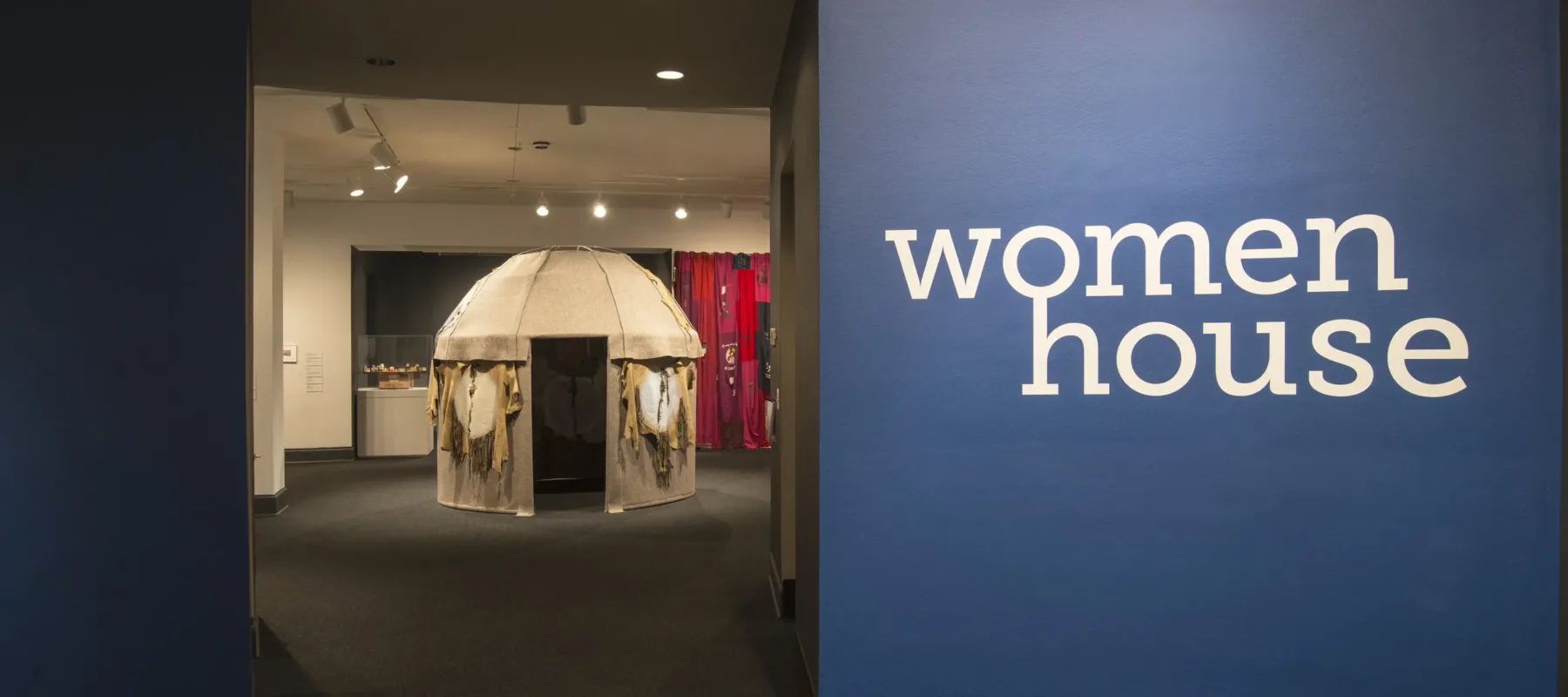Questions about a woman’s “place” resonate in our culture, and conventional ideas about the house as a feminine space persist. Global artists in Women House recast conventional ideas about the home through provocative photographs, videos, sculptures, and room-like installations.
Judy Chicago, Butterfly, test plates, 1973–74
One of the leaders of the 1970s feminist art movement, Judy Chicago (b. 1939, Chicago, Illinois) is considered one of the most innovative and influential artists of the period. Like many other feminist artists, Chicago was interested in raising craft, or “women’s work,” to the status of fine art. In the early 1970s she began studying china painting. Her Butterfly test plates feature a synthesis of vulvar and butterfly imagery, celebrating the female form from a woman’s perspective rather than through the male gaze.
Chicago’s plates were a precursor to The Dinner Party (1974–79), permanently housed at the Brooklyn Museum. The installation consists of 39 ornate place settings, each dedicated to a significant historical or mythological woman, including Sacajawea, Artemisia Gentileschi, and Virginia Woolf. The place settings exhibit a variety of craft techniques, including needlework and china painting. Women celebrated in the installation. Over the course of nearly five years, and with the help of hundreds of volunteers, Chicago executed one of the most iconic artworks of the 20th century.
Johanna Demetrakas, Womanhouse, 1972
In 1971, Judy Chicago and Miriam Schapiro established a feminist art program at California State University, Fresno. For their project Womanhouse, which inspired NMWA’s Women House, Chicago and Schapiro rented a dilapidated mansion in Los Angeles. Along with 23 of their students, they transformed it into a unique exhibition space “suitable to the dreams and fantasies they envisioned for what would be an exclusively female environment.” Womanhouse consisted of workshops, performances, and installations that critiqued gender roles and explored the relationship between women and domesticity. Believing that “society fails women by not demanding excellence from them,” Schapiro and Chicago encouraged their students to push themselves beyond their boundaries.
Award-winning filmmaker Johanna Demetrakas (b. 1937) chronicled Womanhouse in a documentary of the same name. She filmed various workshops, performances, and audience reactions to the installations. The documentary has been screened at NMWA as well as the Whitney Museum, the Venice Biennale, and the Museum of Contemporary Art, Los Angeles. To learn more about the inspiration behind NMWA’s current exhibition, watch an online preview of the Womanhouse film and visit the official Womanhouse website to learn more.
Visit the museum and explore Women House, on view through May 28, 2018.

